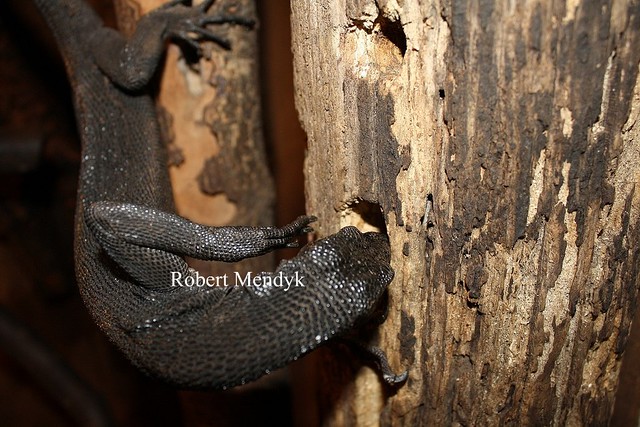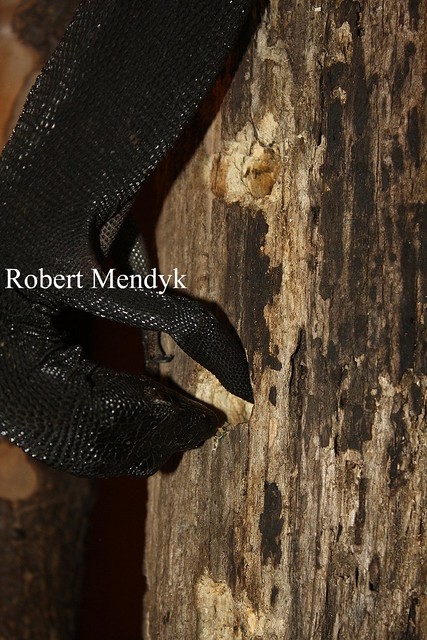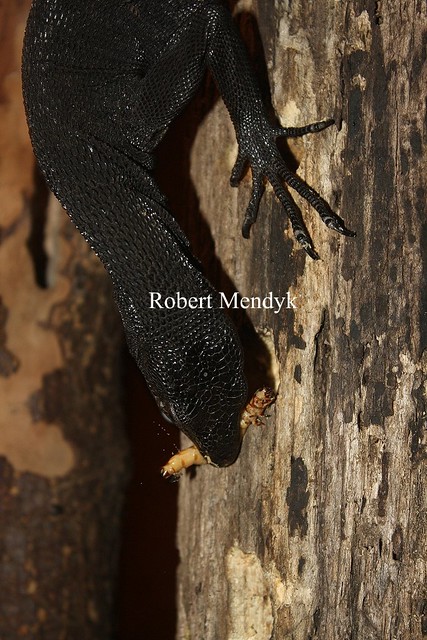Posted by:
Robert_Mendyk
at Mon Jan 23 21:52:34 2012 [ Report Abuse ] [ Email Message ] [ Show All Posts by Robert_Mendyk ]
Since the ongoing discussion is getting further and further down the page and is getting difficult to keep track of, I've decided to bump at least this part of the discussion up to the top of the page.
Gregg, in a recent post below you stated the following:
"My definition of intelligence (which happens to be THE definition of intelligence) is an animal that can solve problems, capable of abstract, complex thought, reasoning, advanced communication, self awareness, and most importantly, understanding. Out of all of those thing, what do varanids display?"
First, I'm not sure where you got this idea that there is a single, unifying definition of "intelligence", as in the field of psychology, there is no clear-cut single concept. There are probably dozens of books and hundreds of academic papers which deal with the problem of defining intelligence. It is one of many challenges psychologists face on a regular basis, especially when attempting to compare cognitive abilities between species and across broader taxonomic groups.
Second, you state that problem solving is one criterion for what you consider to be "intelligence". Yet, if you were familiar with the literature, you would be aware that there have been many published reports describing complex problem solving abilities in monitor lizards. Here are just a few reports that I suggest looking into:
Manrod, J.D., R. Hartdegen & G.M. Burghardt. 2008. Rapid solving of a problem apparatus by juvenile black-throated monitor lizards (Varanus albigularis albigularis). Animal Cognition 11(2): 267-273.
Firth, I., M. Turner, M. Robinson & R. Meek. 2003. Response of monitor lizards (Varanus spp.) to a repeated food source; evidence for association learning? Herpetological Bulletin 84: 1-4.
Gaalema, D.E. 2011. Visual discrimination and reversal learning in rough-necked monitor lizards (Varanus rudicollis). Journal of Comparative Psychology 125(2): 246-249.
Horn, H.-G. 1999. Evolutionary efficiency and success in monitors: a survey on behavior and behavioral strategies and some comments. In H.-G. Horn & W. Boehme (eds.), Advances in Monitor Research II. Mertensiella 11, pp. 167-180. Deutsche Gesellschaft fur Herpetologie und Terrarienkunde e.V., Rheinbach.
Krebs, U. 2007. On intelligence in man and monitor: observations, concepts, proposals. In H.-G. Horn, W. Boehme & U. Krebs (eds.), Advances in Monitor Research III. Mertensiella 16, pp. 44-58. Deutsche Gesellschaft fur Herpetologie und Terrarienkunde e.V., Rheinbach.
Mendyk, R.W. & H.-G. Horn. 2011. Skilled forelimb movements and extractive foraging in the arboreal monitor lizard Varanus beccarii (Doria, 1874). Herpetological Review 42(3): 343-349.
The last reference in this list documents an example of problem solving that I discovered in black tree monitors. Long story short (I can provide you with the full article if you'd like to read about this in greater detail), when V. beccarii were presented with prey items hidden inside of narrow openings too small for their heads to enter (holes drilled into tree limbs), the monitors switched from their conventional method of prey capture (seizure with the jaws) to utilizing a completely different set of motor skills to successfully extract prey from the holes through coordinated reaching forelimb movements. Here are a few photos depicting the behavior:





![]()
Here is some video footage depicting the behavior:
www.youtube.com/watch?v=KlPlYAEXLrw
www.youtube.com/watch?v=ilPhdnnS4gE&feature=related
While I consider the reaching forelimb movements themselves to have a genetic basis (instinctive), the thought process of switching from one foraging strategy to another and abandoning their primary method of prey capture (the jaws) represents a cognitive decision made by the monitor to solve a foraging dilemma (= "problem solving" ). Also interesting is the fact that depending on their body positioning, these animals will switch between use of their left and right forelimbs in order to reach deeper into tree holes to extract prey. This highlights yet another example of problem solving.
I don't know about you, but I consider this to be pretty spectacular and exciting, as I am unaware of any other reptile which demonstrates this particular ability (not to mention the coordination/dexterity when extracting prey from embedded matrices).
[ Reply To This Message ] [ Subscribe to this Thread ] [ Show Entire Thread ]
|





